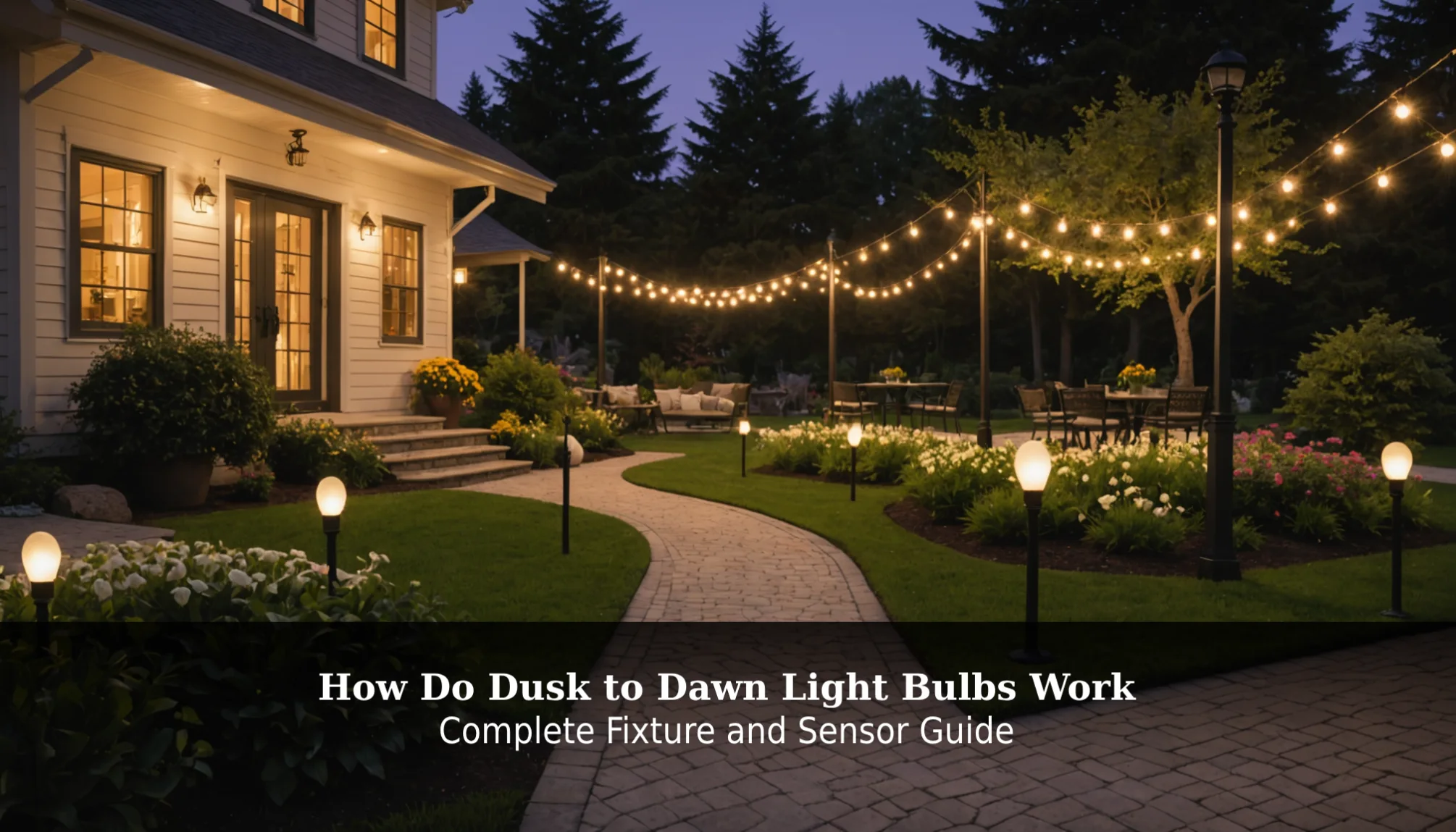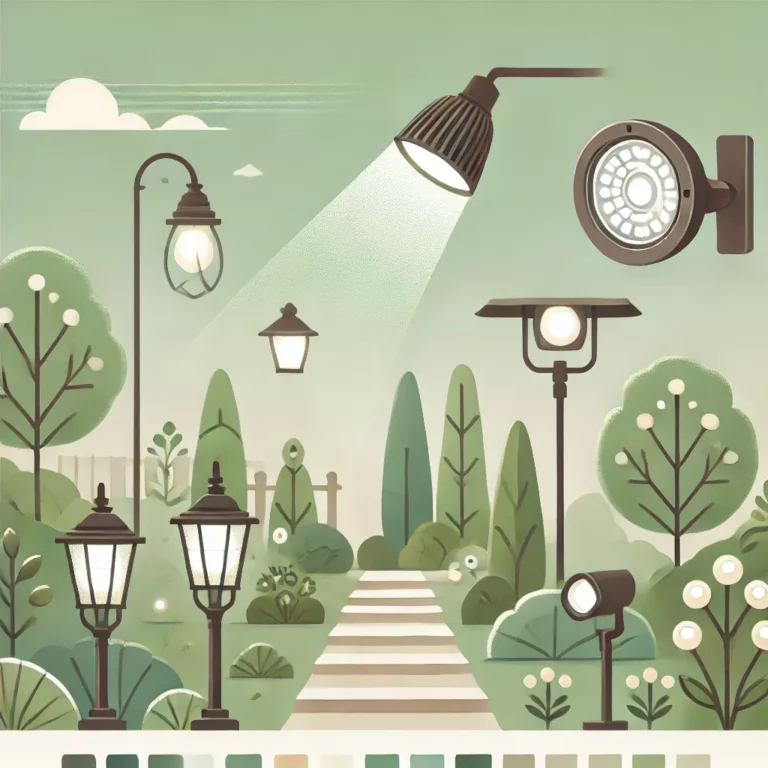How Do Dusk to Dawn Light Bulbs Work: Complete Fixture and Sensor Guide
Have you ever wondered how your outdoor lights know when to turn on? The answer lies in the fantastic technology behind how do dusk to dawn light bulbs work! These clever bulbs automatically light up your yard at night, providing safety and illumination without you having to lift a finger. Understanding this magic not only saves energy but also helps protect your home from intruders.
In this article, we’ll explore the amazing photocell sensors that trigger these lights, the different types of bulbs you can use, and the benefits they provide for your outdoor spaces. Plus, we’ll guide you through installation tips and maintenance tricks to keep everything running smoothly. If you don’t get familiar with these smart lighting solutions, you might miss out on the energy savings and security they offer. Let’s dive in and illuminate the night together!
Understanding Dusk to Dawn Lighting Functionality
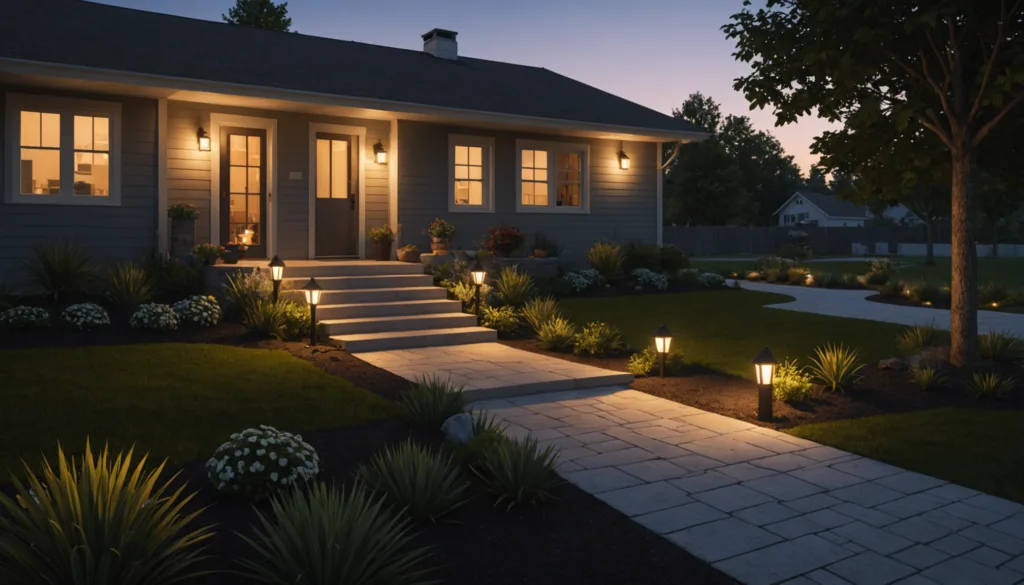
How the Photocell Sensor Detects Light Levels
Photocell sensors measure the intensity of natural light with a light-sensitive element. When the ambient light drops below a preset level, the sensor sends a signal to operate the bulb. This method of photoelectric detection provides a reliable, energy-efficient solution for maintaining continuous lighting during the night. By relying on this technology, dusk to dawn fixtures significantly reduce energy waste and contribute to overall environmental conservation.
The Science Behind Dusk to Dawn Outdoor Lighting
Dusk to dawn light fixtures rely on photoelectric technology. The built-in light sensor continuously monitors ambient light levels and triggers the lighting fixture as soon as sunlight decreases. This reliable process reduces energy consumption and contributes to overall energy efficiency. The science behind this technology allows for precise control of illumination, ensuring that lights only operate when necessary, thus extending the life of the bulbs.
Different Types of Bulbs for Dusk to Dawn Fixtures
LEDs are popular for these fixtures because they are energy-efficient and durable. Compact fluorescent and incandescent bulbs also see use, each providing different brightness levels and energy use. The selection of the bulb type depends on the specific lighting solution required for each exterior area. Furthermore, using LED bulbs can lead to substantial savings on electricity bills due to their lower power consumption compared to traditional incandescent options.
Benefits for Property Security and Safety
Automatic lights provide constant nighttime illumination that improves property security. Consistent lighting deters intruders and secures driveways and pathways. With no need for manual switching, dusk to dawn lights offer a safe, energy-efficient solution. Moreover, well-lit outdoor areas enhance visibility for residents and visitors, promoting safety and comfort while navigating around the property during dark hours.
How Do Dusk to Dawn Light Bulbs Work with Photocell Technology
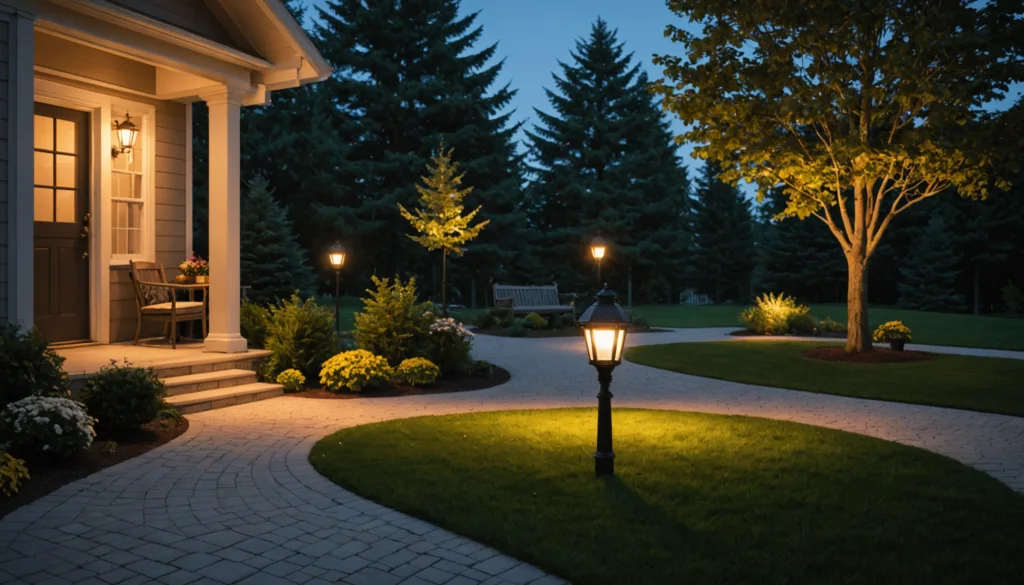
The Role of the Photocell Sensor in Automated Lighting
The photocell sensor acts as the primary element that continuously measures ambient light. Once the light intensity drops below a set threshold at sunset, it triggers the fixture to illuminate. As ambient light increases at sunrise, the sensor switches the light off, ensuring energy-efficient and consistent operation. This integration of technology eliminates user error in manual switching, further enhancing reliability in outdoor lighting systems.
Comparing Integrated vs. Screwable Dusk to Dawn Sensors
- Integrated sensors are built-in to the fixture, offering a seamless design and simple installation.
- Screwable sensors provide a flexible, retrofitting option for upgrading older lighting systems without complete replacement. The choice between these sensor types depends on individual preferences and existing infrastructure, allowing users to select a solution that best fits their needs.
References:
Troubleshooting Common Sensor Issues
Common issues arise from sensor obstructions, dirt, or wiring faults. Regular maintenance, including cleaning and testing, helps preserve accurate light detection. Ensuring the sensor remains unobstructed supports consistent operation in various weather conditions. Identifying and resolving these issues promptly not only enhances performance but also extends the lifespan of the lighting system. (PacLights)
Testing Your Dusk to Dawn Fixture for Proper Operation
- Observe the fixture at dusk to confirm it illuminates automatically.
- Check at sunrise to ensure the sensor switches the light off when daylight increases.
- Conduct periodic maintenance to remove any debris that may interfere with the sensor’s ability to detect ambient light. Performing these tests regularly can prevent unexpected failures and ensure optimal functionality throughout every season.
Installation Guide for Dusk to Dawn Lighting Systems

Choosing the Right Location for Optimal Sensor Function
Place the fixture where it has an unobstructed view of the sky to capture ambient light changes. Avoid areas with excessive shade from trees or architectural features. Correct mounting improves overall illumination of pathways, driveways, or landscape areas. Additionally, considering seasonal sun patterns can help determine ideal placement for year-round effectiveness.
Step-by-Step Installation Process for Maximum Safety
- Turn off electricity at the circuit breaker.
- Mount the light fixture securely using durable materials.
- Connect the wiring following the manufacturer’s instructions.
- Attach the photocell sensor if it is not already integrated into the fixture.
- Restore power and test the automatic operation at dusk. Following these steps carefully can help avoid potential hazards and ensure that your lighting system operates smoothly right from the start.
Professional vs. DIY Installation Considerations
Many dusk to dawn lighting systems are designed for ease of installation. However, complex electrical systems or high-voltage setups may require a qualified electrician to ensure safety and compliance with local codes. This approach helps safeguard property and maintain proper function while providing peace of mind for homeowners who may lack experience in electrical work. (Landscape Lighting Oakville)
Maintenance and Longevity of Dusk to Dawn Outdoor Lighting
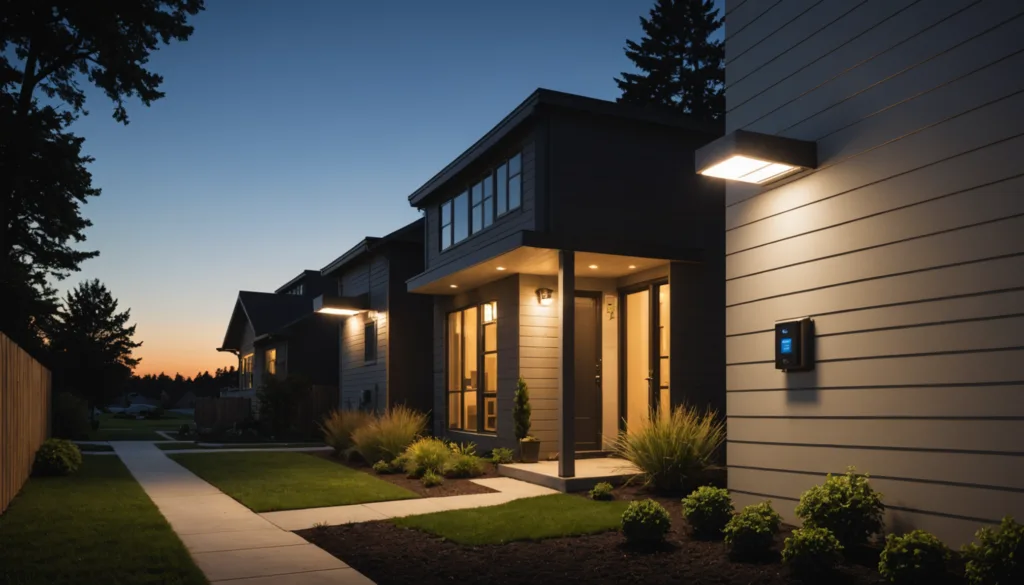
Routine Cleaning for Sensor Effectiveness
Clean the sensor with a soft cloth to remove dust and debris that may reduce detection accuracy. Regular cleaning ensures the sensor continues to measure ambient light reliably. By keeping sensors clean, property owners can enhance their lighting efficiency and prolong bulb life.
When to Replace Bulbs
Bulb replacement should follow the manufacturer’s recommended guidelines. Replace bulbs that begin to dim or flicker to maintain consistent illumination throughout the night. Staying proactive about bulb replacement not only improves lighting quality but also contributes to ongoing energy savings.
Weatherproofing Tips for Extended Functionality
Using fixtures rated for exterior use and sealing connections with waterproof materials protects them from harsh weather conditions. Adjust sensor settings as daylight hours change seasonally to ensure proper trigger levels for automated lighting. Implementing these precautions will help maintain optimal performance throughout varying weather patterns.
Energy Efficiency Benefits of Dusk to Dawn Lighting
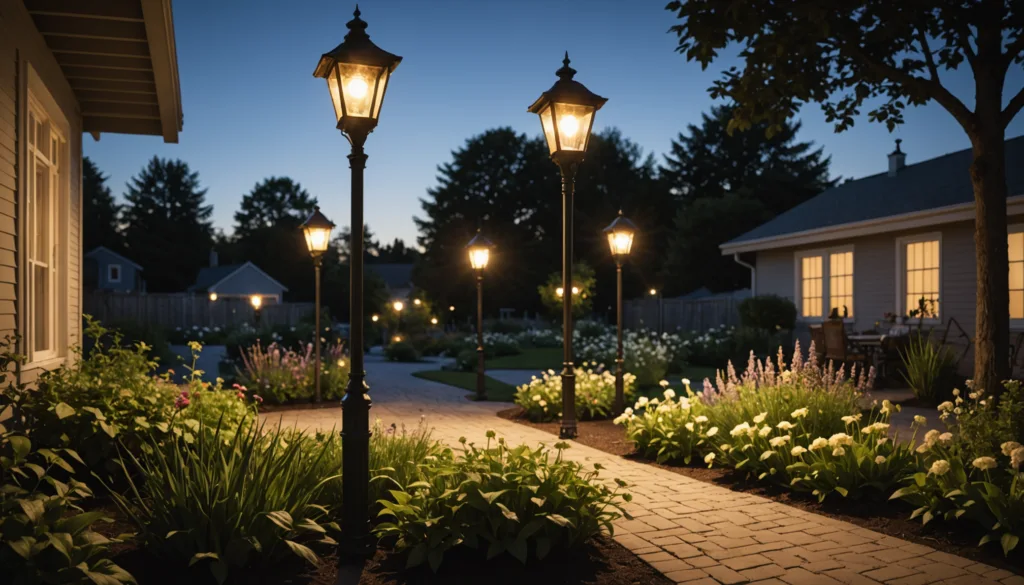
Calculating Energy Savings Compared to Manual Lighting
These fixtures lower overall electricity use by eliminating continuous manual switching. Reduced energy consumption leads to lower utility bills and a more cost-effective lighting solution. Homeowners can expect substantial savings over time by relying on these automated systems instead of traditional manual lighting.
Smart Integration Options for Enhanced Efficiency
Modern dusk to dawn lights may connect to smart home systems, allowing remote monitoring and control over lighting schedules. This advanced integration ensures that the lighting system adapts to ambient light increases and decreases seamlessly. Such features not only enhance convenience but also allow homeowners to optimize their energy usage based on real-time data.
Return on Investment for Property Owners
With improved energy savings and enhanced security, dusk to dawn lighting offers a faster return on investment compared to manual lighting systems. The benefits include reduced energy consumption and dependable exterior lighting, which can enhance property values over time as well.
Conclusion
Dusk to dawn light bulbs work by using a built-in photocell sensor that detects ambient light levels. At dusk, the sensor triggers the fixture to illuminate outdoor spaces; at sunrise, it switches off the light. With various bulb options, easy installation, and smart integration, these energy-efficient lighting solutions enhance property security and reduce energy consumption while making outdoor areas safer.
FAQs
1. How do dusk-to-dawn light bulbs work?
They use a built-in photocell sensor to detect ambient light. The light automatically switches on at sunset and off at sunrise.
2. What types of sensors are used in these fixtures?
Dusk-to-dawn fixtures use integrated sensors built into the bulb or fixture and screwable sensors that can be attached separately.
3. Are these lights energy-efficient?
Yes, they can reduce energy consumption by up to 50% compared to manual lighting systems.
4. Do dusk-to-dawn lights improve property security?
Constant illumination from these fixtures helps deter intruders and enhances safety.
5. Can these lights work with smart home systems?
Some dusk-to-dawn lighting systems offer smart integration for remote control and scheduling, adding an extra layer of convenience and efficiency.

